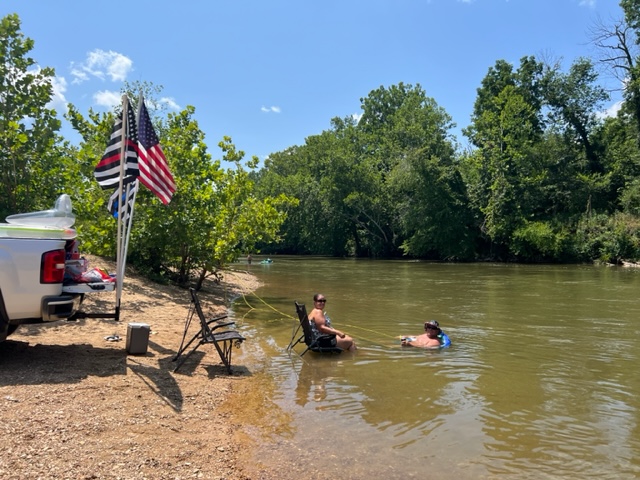Permits & Protocols for Fishing in Ozark Streams: Essential Guidelines for Anglers
Camping Tips
Fishing in the Ozarks offers a unique experience, with clear streams and a variety of fish to pursue. To fish legally in Ozark streams, you need a valid fishing permit, and if you are targeting trout, you’ll also need a separate trout permit. Permits can be obtained online or at authorized locations, and specific regulations may apply depending on the stream and species.
Understanding the right protocols is just as important as having the proper permits. Ozark streams are subject to daily limits, gear restrictions, and access rules to protect local ecosystems. Following these requirements ensures that you stay compliant with Missouri state laws and contribute to the conservation of the region’s natural resources.
Legal Requirements for Fishing in Ozark Streams
To legally fish in Ozark streams, you need the right permits and must follow specific state and federal regulations. Anglers are also required to observe species-specific rules and seasonal protections for various game fish.
Mandatory Fishing Permits
You must carry a valid fishing permit from the Missouri Department of Conservation to fish in Ozark streams, including areas managed by the Ozark National Scenic Riverways. Anyone aged 16 to 64 is required to have a fishing permit, regardless of residency.
For trout fishing, an additional trout permit is required if you intend to possess or transport species like brown trout or brook trout. Both permits can be purchased online or from local vendors authorized by the Department of Conservation. If you’re fishing in designated national park areas, a fishing permit remains mandatory, with possible requirements for a special use permit for certain group or commercial activities.
Understanding Fishing Regulations
Ozark stream fishing is governed by daily and possession limits set by the Missouri Department of Conservation. For example, the daily limit for black bass (including smallmouth bass) is typically six fish, with a minimum size limit of 12 inches. The possession limit, often double the daily limit, defines how many fish you can hold at one time.
Regulations may vary by location, type of waterbody, and target species. Special regulations sometimes apply in specific zones, particularly in the Ozark National Scenic Riverways, where certain methods or seasons may be restricted. Always refer to the latest Missouri fishing regulations booklet or official websites for up-to-date information.
Protected and Regulated Species
Several species in Ozark streams are subject to special rules. If you plan to fish for trout (brown, brook, or cutthroat), you need to observe size limits, creel limits, and stream-specific regulations. Trout waters may also have catch-and-release sections or fly-fishing-only zones.
Protected species such as the alligator gar may require separate permits or be completely off-limits in some areas. Other regulated fish include catfish, walleye, crappie, and white bass, each with their own daily and possession limits. Check if the species you target requires additional stamps or endorsements before your trip.
Protocol and Best Practices for Responsible Fishing
Responsible fishing in Ozark streams requires proper methods, environmental care, and an understanding of specific locations. Staying mindful of ethics, regulations, and the unique features of each fishery helps preserve the Ozarks for future generations.
Permitted Fishing Methods and Gear
You are expected to use only legal fishing methods specified by the Missouri Department of Conservation and Arkansas Game and Fish Commission in the Ozark region. Common permitted gear includes rod and reel, pole and line, and specific trotlines with regulations on hook numbers and labeling. Use of explosives, poisons, or snagging devices is strictly prohibited.
Artificial lures and live bait are often allowed, but check for stream-specific rules, especially in spring branches and trout waters. Some streams may prohibit live bait to limit the spread of invasive species. Barbless hooks are recommended on popular rivers like the White River and Jacks Fork River to minimize fish injury and promote safe catch-and-release. Always inspect your gear to ensure it complies with local laws before fishing.
Conservation and Stewardship Efforts
Conservation and stewardship are essential to sustaining healthy fish populations. Adhere to posted catch and size limits — these vary by species and waterbody, especially for smallmouth bass and trout on rivers like the White River. Return protected or undersized fish quickly to the water, handling them with wet hands to protect their slime coat.
Pack out all litter, including fishing line and bait containers, as debris can harm aquatic life. Report any illegal activity, overfishing, or habitat destruction to local authorities. Support preservation by participating in stream cleanups and respecting riparian zones with minimal shore disturbance. Patience and care are key when catching and releasing fish to ensure their survival.
Popular Fishing Locations in the Ozarks
Ozark streams offer diverse fishing environments, each with specific protocols and rules. The Jacks Fork River provides clear water ideal for smallmouth bass, with seasonal gear restrictions in certain sections. The White River is renowned for its trout fisheries, and some areas require a trout permit and adherence to strict bait and creel limits.
Other popular locations, such as the Current River and the Buffalo National River, have designated trout parks or special management areas. Regulations in these areas may include only artificial lures and mandatory catch-and-release in certain stretches. Review official maps and posted signs at public access points to verify current rules before you start fishing.
